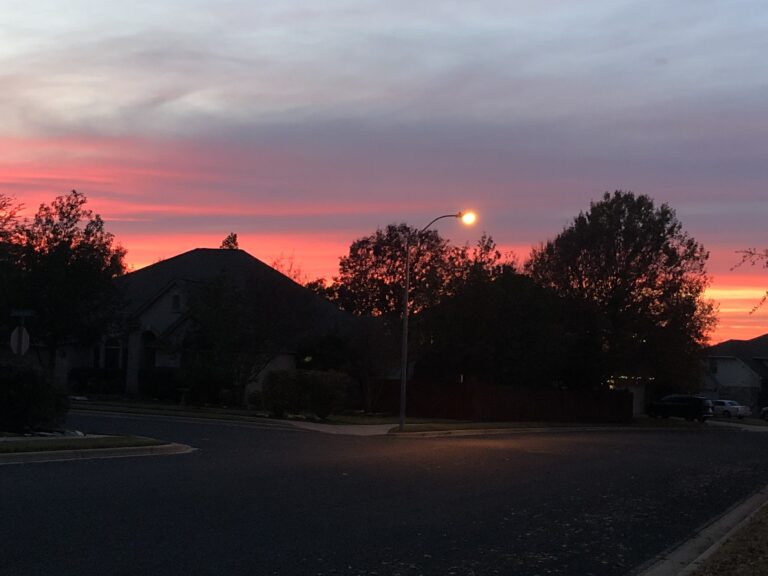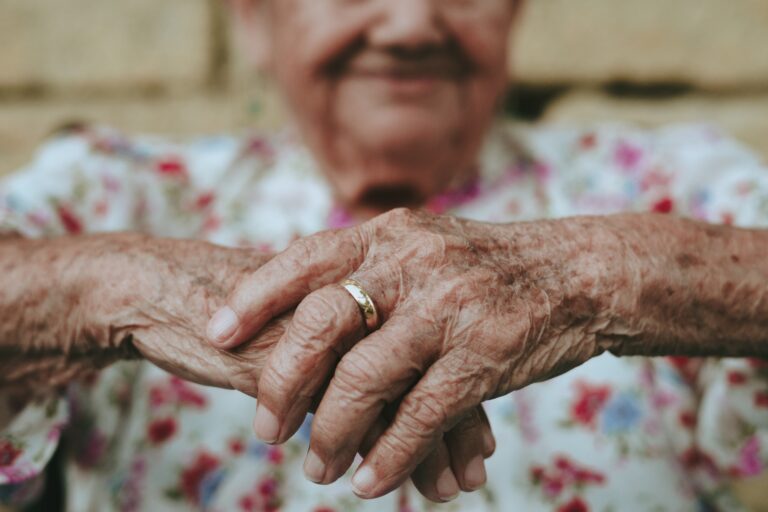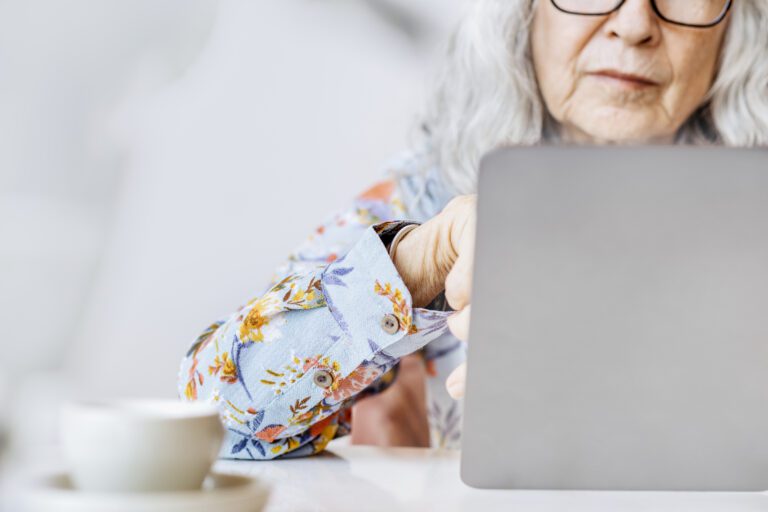A couple of weeks ago, I was speaking to two different children of seniors who were concerned about their parents’ safety. Understanding what the risk is helps us determine the right resource to help us minimize that risk. One had a parent who would wake up in the middle of the night and proceed to the bathroom on his own and he would be considered a fall risk along the way. His daughter wanted to be sure to get to him and assist before he would fall. The other parent would get frustrated and then leave the house and wander away.
Exploring Key Safety Technologies for Seniors
Let’s break this out into four main technologies; GPS trackers, senior monitors, fall monitors and medical alert systems. It’s important to understand the benefits, limitations, and applications of each type of device. This understanding enables caregivers and seniors to select the most appropriate safety technology that aligns with the senior’s specific needs, lifestyle, and health condition.
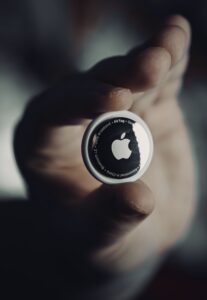 GPS Trackers: GPS trackers are sophisticated devices designed to help locate seniors, especially those with conditions like dementia or Alzheimer’s, who may wander or get lost. These devices can be worn as pendants, watches, or even attached to clothing. They allow caregivers and family members to monitor the senior’s location in real-time via smartphone apps or web-based platforms, ensuring their safety outside the home. GPS trackers often come with additional features, such as geofencing, which alerts caregivers if the wearer goes beyond a predefined safe zone.
GPS Trackers: GPS trackers are sophisticated devices designed to help locate seniors, especially those with conditions like dementia or Alzheimer’s, who may wander or get lost. These devices can be worn as pendants, watches, or even attached to clothing. They allow caregivers and family members to monitor the senior’s location in real-time via smartphone apps or web-based platforms, ensuring their safety outside the home. GPS trackers often come with additional features, such as geofencing, which alerts caregivers if the wearer goes beyond a predefined safe zone.
Baby Monitors for Seniors: Traditionally used for monitoring infants, baby monitors have found a unique application in senior care, especially for those who require constant observation due to health issues like dementia or mobility problems. These devices allow caregivers to keep an auditory or visual check on seniors from another room, ensuring their safety and providing peace of mind. Modern baby monitors offer features such as two-way communication, night vision, and remote video streaming over Wi-Fi, making them an excellent choice for monitoring seniors who may need immediate attention or reassurance, even if the caregiver is not in the same room.
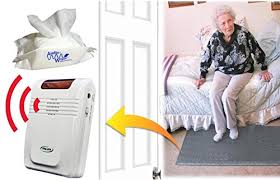 Fall Monitors: Fall monitors are specialized devices designed to detect when a senior has fallen, a critical concern given the serious risks falls pose to elderly individuals. Unlike general health and activity monitors, fall monitors specifically focus on sudden movements or orientations that indicate a fall. These devices can be integrated into wearable alert systems, bed sensors, and even floor mats, providing comprehensive coverage in various scenarios. When a fall is detected, the system automatically alerts caregivers or emergency services, ensuring rapid response to potentially life-threatening situations. The technology behind fall monitors continues to advance, with newer models incorporating more sophisticated sensors and algorithms to reduce false alarms and increase detection accuracy.
Fall Monitors: Fall monitors are specialized devices designed to detect when a senior has fallen, a critical concern given the serious risks falls pose to elderly individuals. Unlike general health and activity monitors, fall monitors specifically focus on sudden movements or orientations that indicate a fall. These devices can be integrated into wearable alert systems, bed sensors, and even floor mats, providing comprehensive coverage in various scenarios. When a fall is detected, the system automatically alerts caregivers or emergency services, ensuring rapid response to potentially life-threatening situations. The technology behind fall monitors continues to advance, with newer models incorporating more sophisticated sensors and algorithms to reduce false alarms and increase detection accuracy.
Medical Alert Systems: These systems are designed to offer seniors immediate access to emergency assistance with the press of a button. Wearable as pendants or wristbands, or installed as wall units in key areas of the home, medical alert systems ensure that help is just a button press away. Many systems are monitored 24/7 by professionals ready to dispatch emergency services if needed, offering peace of mind to both seniors and their caregivers.
The Role of Technology in Enhancing Independence and Safety
GPS Trackers: For seniors who enjoy walks or have a tendency to wander due to cognitive impairments, GPS trackers can be invaluable. They provide peace of mind to caregivers by enabling real-time location tracking, ensuring that the senior can be quickly found if they become lost.
Baby Monitors for Seniors: Baby monitors can be repurposed to help caregivers monitor seniors with mobility or cognitive issues, especially those who may not be able to communicate their needs verbally. These devices can alert caregivers to movement, falls, calls for help, or other immediate needs.
Fall Monitors: Specialized fall monitors detect sudden movements or positions indicative of a fall. They are crucial for seniors with a high fall risk, automatically alerting caregivers or emergency services to provide prompt assistance, potentially averting severe injuries.
Medical Alert Systems: These systems empower seniors to call for help with the press of a button. Wearable as pendants or bracelets, they are ideal for seniors with chronic health issues, mobility problems, or those at risk of falls, ensuring help is always within reach.
Key Questions to Ask to Understand Their Needs and Fears
- What daily activities do you find challenging?
- Have you experienced falls in the past year? If so, under what circumstances?
- Do you feel safe moving around your home or outside?
- Are there any aspects of your health that you’re worried about managing on your own?
- How do you feel about using technology to help with your safety and independence?
- What changes to your living environment or routine do you think would help you the most?
- Are there any specific fears or concerns about your health and safety that you’d like to discuss?
Understanding the unique needs and concerns of your senior loved one allows for the creation of a tailored care plan that prioritizes their independence and safety. Technology, when chosen thoughtfully and introduced empathetically, can be a powerful tool in achieving these goals.
Choosing the Right Safety Technology Based on Living Situations
Choosing the right safety and adaptive living technology for seniors is a critical decision that hinges on their living situation. Each environment presents unique challenges and opportunities for enhancing safety and independence through technology. Here’s a closer look at recommendations based on various living situations.
Safety Technology to Consider for Independently Living Seniors
Independently living seniors often prioritize maintaining their autonomy while ensuring their safety. Technologies recommended for this group include:
- GPS Trackers: Ideal for active seniors who venture outside the home. These devices can help in case of getting lost or disoriented.
- Medical Alert Systems: Essential for summoning help with the push of a button, especially for those with chronic conditions or fall risk.
- Smart Home Devices for seniors: Automated lighting, voice-activated systems, and smart locks can make daily tasks easier and enhance home security.
- Wearable Fitness Trackers: These can monitor heart rate, sleep patterns, and activity levels, offering insights into health and wellness.
The aim is to blend technology seamlessly into their lifestyle when they have minimal deficiencies so they become used to it, ensuring these tools are user-friendly and respect the senior’s desire for independence.
For Seniors Living with Family or With In-Home Caregivers
When seniors live with family or with other caregivers, the goal of technology shifts towards supporting caregivers in their roles while respecting the senior’s independence. Useful technologies include:
- Baby Monitors for Seniors: Allow caregivers to monitor seniors remotely, ensuring they are safe without constant physical check-ins.
- Fall Detection Mats: Placed beside the bed or in the bathroom, these mats alert caregivers immediately if a fall occurs, crucial for nighttime safety.
- Health Monitoring Systems: Devices that track vital signs and can alert caregivers to changes in the senior’s health status.
- Smart Medication Dispensers: These can remind seniors when to take their medication and alert caregivers if a dose is missed, managing health conditions effectively.
These technologies can provide a balance, offering peace of mind to caregivers while allowing seniors to feel less monitored and more independent.
What Safety Technology to Consider For Seniors in Senior Communities
Senior communities often come equipped with basic safety technologies, but personal devices can complement these features and offer additional peace of mind:
- Personal Medical Alert Systems: While communities may have emergency call systems, a personal device ensures the senior can get help anywhere, anytime.
- Wearable Health Monitors: Useful for keeping a personal log of health data that can be shared with healthcare providers for tailored health management.
- GPS Trackers with Geofencing: Useful for seniors who may wander due to cognitive impairments, allowing community staff and families to locate them quickly if they leave a designated safe area.
- Tablets and Smartphones with Health Apps: These can encourage social engagement, allow easy communication with family, and enable access to health information and reminders.
It’s essential for technology choices to respect the community’s guidelines and integrate well with the services and support already in place.
In each living situation, the chosen technology should enhance the senior’s safety and independence while being adaptable to their needs and preferences. The key is selecting devices that are not only effective but also accepted and used consistently by the senior, ensuring they become a helpful part of their daily routine.
What are some GPS trackers available for monitoring elderly loved ones?
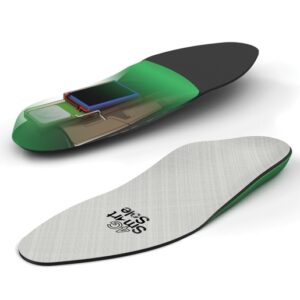 There is a wide range of wearable GPS trackers available for seniors, each offering unique designs and styles to cater to different preferences and needs. These options include discreet pendants, smartwatches, fitness bands, and even hidden shoe inserts. Seniors can choose from stylish stainless steel pendants, lightweight fitness bands, smartwatches, or discreet shoe inserts. Some wearable GPS trackers come in the form of tracker watches with pre-activated cell phones, portable medical alert systems worn around the neck, and GPS tracking devices disguised as fashionable necklaces. These designs offer various features such as 2-way communication, long battery life, water-resistant properties, and connectivity options like GPS, Wi-Fi, and cellular networks. These devices offer features like real-time tracking, geofencing alerts, customizable position reporting, and various subscription plans.
There is a wide range of wearable GPS trackers available for seniors, each offering unique designs and styles to cater to different preferences and needs. These options include discreet pendants, smartwatches, fitness bands, and even hidden shoe inserts. Seniors can choose from stylish stainless steel pendants, lightweight fitness bands, smartwatches, or discreet shoe inserts. Some wearable GPS trackers come in the form of tracker watches with pre-activated cell phones, portable medical alert systems worn around the neck, and GPS tracking devices disguised as fashionable necklaces. These designs offer various features such as 2-way communication, long battery life, water-resistant properties, and connectivity options like GPS, Wi-Fi, and cellular networks. These devices offer features like real-time tracking, geofencing alerts, customizable position reporting, and various subscription plans.
Here are 6 of the most popular GPS trackers for seniors and their key features, benefits, and cons:
– Features: Real-time location tracking, SOS alert, geofencing, fall detection, movement alerts, low battery alerts, assistive speakerphone
– Benefits: Provides peace of mind and freedom for seniors, comprehensive safety features
– Cons: Requires a monthly subscription fee, can drain phone battery faster
– Features: iOS and Android apps, quick location updates
– Benefits: Well-reviewed, easy to use
– Cons: Can be removed or lost, creates a false sense of security, may represent a loss of privacy for some seniors
3. Tranquil GPS Tracking Watch for the Elderly
– Features: SOS button, two-way communication, GPS ‘safe zones’, water resistant
– Benefits: Stylish, discreet design, works both in and out of the home
– Cons: Limited battery life, not inexpensive
– Features: Hidden design in shoe insoles, location tracking via smartphone/web
– Benefits: Protects senior’s dignity, easy to use
– Cons: Limited to shoe-based tracking, monthly subscription required
– Features: Smart alerts, long battery life, small size
– Benefits: Affordable, comprehensive tracking capabilities
– Cons: Monthly subscription fee after first year
6. Bay Alarm Medical Alert GPS Tracker
– Features: Portable help button, auto-fall detection
– Benefits: Reliable, reasonably priced
– Cons: Limited to on-the-go tracking, monthly subscription required
Just be aware that in some states like Texas, you can’t put a tracking device on a car that you don’t own or lease unless you get effective consent from the other person.
When purchasing a GPS tracker for a senior loved one, there are several important factors to consider to ensure you select the right device for their needs.
1. Type of Device: Consider the type of GPS tracker that would best suit your senior loved one. Some devices can be discreetly worn as a necklace, watch, or bracelet, while others are more conventional. The preference of your loved one and their comfort level with the device’s design should be taken into account.
2. Monthly Fees: Many GPS trackers come with monthly fees as they utilize cellular technology to provide real-time location tracking. While some devices offer no-fee options, they may have limited tracking capabilities. Assessing the budget and the value of the features provided by the device is crucial.
3. Additional Features: Look into the additional features offered by the GPS tracker. Some trackers double as fitness devices, providing health metrics and monitoring. Features like SOS emergency buttons, two-way calling, and audio monitoring can be significant for senior individuals in need of additional support and safety measures.
4. GPS Capabilities: Determine the extent of GPS capabilities required for tracking your senior loved one. If nationwide coverage is necessary, investing in a more expensive conventional GPS tracker may be beneficial. However, if shorter-range tracking suffices, there are less expensive, basic devices available that can still meet your needs.
By considering these factors comprehensively, you can make an informed decision when selecting a GPS tracker for your senior loved one that meets both their practical needs and personal preferences.
What are some baby monitors available for monitoring seniors
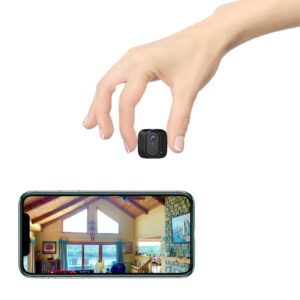 While baby monitors are traditionally designed for parents to keep an eye on their infants, they have become increasingly popular for monitoring elderly loved ones, especially those who may require constant observation due to health issues or mobility limitations. Here’s an overview of some types of baby monitors that can be repurposed for elder care, highlighting their features that can be particularly beneficial.
While baby monitors are traditionally designed for parents to keep an eye on their infants, they have become increasingly popular for monitoring elderly loved ones, especially those who may require constant observation due to health issues or mobility limitations. Here’s an overview of some types of baby monitors that can be repurposed for elder care, highlighting their features that can be particularly beneficial.
Audio Monitors
Basic Audio Monitors: These are the simplest form of baby monitors, allowing caregivers to hear if their elderly loved one is calling out for help, is in distress, or is experiencing an emergency. They are straightforward, usually have a long battery life, and can cover a considerable range within the house.
Two-Way Audio Monitors: These devices allow for two-way communication, enabling the caregiver not only to listen in but also to speak with their loved one. This feature can be reassuring for the elderly, as they can easily call for help or just chat without needing to move.
Video Monitors
Standard Video Monitors: These come with a camera unit that transmits a video feed to a monitor screen, allowing caregivers to visually check on their loved ones. Many models offer night vision, making them suitable for overnight monitoring.
Wi-Fi-Enabled Video Monitors: These monitors connect to the home Wi-Fi network, allowing the video feed to be viewed on a smartphone, tablet, or computer from anywhere with internet access. This is particularly useful for caregivers who need to step out of the house but still want to keep an eye on their elderly family members.
Advanced Video Monitors with Movement Sensors: Some video monitors come equipped with movement sensors that can alert caregivers to unusual activity or lack thereof. This can be particularly useful for monitoring seniors with a fall risk or those who are bedridden.
Specialized Monitors
Wearable Monitors: Wearable devices can monitor vital signs such as heart rate and breathing patterns. While not traditional baby monitors, they can be adapted for senior care, alerting caregivers to potential health issues.
Fall Detection Monitors: These monitors are designed to detect falls, sending an alert to the caregiver or a monitoring center. Though specifically designed for fall detection, they serve a similar purpose to monitors by providing real-time alerts about a senior’s well-being.
Smart Home Integration: Some baby monitors can be integrated into a smart home system, allowing for broader monitoring capabilities, such as motion detection alerts, automated lighting for nighttime safety, and temperature control for comfort.
Choosing the Right Monitor
When selecting a baby monitor for elder care, consider the specific needs of your loved one and the features that will best meet those needs. Audio-only monitors might be sufficient for those who only need occasional check-ins, while video or Wi-Fi-enabled monitors offer more comprehensive monitoring for seniors with greater health or safety concerns. Wearable and fall detection monitors offer additional layers of safety for those at risk of health issues or falls.
It’s also important to look for devices with easy-to-use features for both the senior and the caregiver, ensuring that the technology enhances care without adding complexity or stress to their lives.
Here are a few of the most popular audio and video monitors for seniors beyond traditional baby monitors and their key features and cons:
– Features: Voice control, video calls, smart home integration, Drop in feature, optional CareHub
– Cons: More complex setup and features than some seniors may need
– Features: Two way talkl, video preview of motion detection, integrates with Alexa
– Cons: More complex setup and features than some seniors may need
– Features: Motion detection, remote monitoring, two-way audio, night vision
– Cons: Installation and setup may be challenging for some seniors
4. Zone Shield 4K Air Purifier DVR
– Features: Looks like an ordinary air purifier, records HD video when motion is detected, night vision
– Cons: Does not record audio
5. envoyatHome Digital Caregiver
– Features: Passive monitoring means no cameras, invasive listening devices, microphones, or buttons to activate. Easy to install
– Cons: Does not record audio or video
Overall, these audio and video monitors offer a range of features to help seniors stay connected and safe, with tradeoffs between ease of use, cost, and functionality. It’s important to consider the individual needs and technical comfort level of the senior when selecting the right monitor.
What are some Fall Detection Devices available for monitoring seniors
Fall monitors are critical devices designed to enhance the safety of seniors by detecting falls and alerting caregivers or emergency services. These devices play a pivotal role in providing timely assistance, which can be crucial in preventing further injury. Here are some types of fall monitors and specific products available for monitoring seniors:
Fall Detection Watches and Wristbands
Smartwatches with Fall Detection: Some smartwatches have built-in fall detection features that can alert pre-set contacts or emergency services if a fall is detected and the wearer doesn’t respond within a certain timeframe.
Examples include:
- Apple Watch Series 4 and later: Features fall detection and Emergency SOS.
- Samsung Galaxy Watch 3 and later: Offers a similar fall detection feature that sends SOS messages to emergency contacts.
In-Home Fall Detection Systems
Fall Detection Sensors: These are non-wearable devices that can be installed in a senior’s home to monitor their movements and detect falls. They typically use a combination of motion sensors and artificial intelligence to differentiate between normal activity and a fall.
There are built in features to Amazon Alexa and added abilities with the Vayyar Care.
Bed and Chair Occupancy Sensors
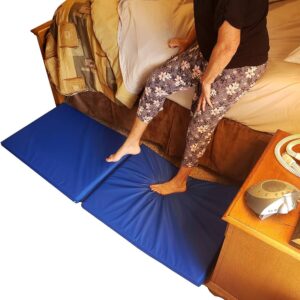 Floor, Bed and Chair Exit Alarms: These devices alert caregivers when a senior attempts to get up from bed or a chair, which can prevent falls by ensuring assistance is provided. They can be particularly useful for seniors with mobility issues or those prone to nighttime falls.
Floor, Bed and Chair Exit Alarms: These devices alert caregivers when a senior attempts to get up from bed or a chair, which can prevent falls by ensuring assistance is provided. They can be particularly useful for seniors with mobility issues or those prone to nighttime falls.
Examples include:
- Smart Caregiver Corporation: Offers cordless floor, bed and chair pads that send an alert to a caregiver pager when pressure is removed from the pad.
- Secure® Safety Solutions: Provides bed and chair alarm systems designed to alert caregivers when a senior is getting up, with various alarm options and sensitivity settings.
- You can find plenty of options on Amazon as well.
Choosing the Right Fall Monitor
When selecting a fall monitor, consider the senior’s lifestyle, level of activity, and specific needs. Wearable devices like medical alert systems with fall detection or smartwatches may be more suitable for active seniors, while in-home fall detection systems could be better for those spending more time indoors. It’s also important to consider the device’s ease of use, comfort, and whether it offers a monitoring service for continuous support.
Regardless of the type chosen, the primary goal is to ensure timely assistance in the event of a fall, potentially reducing the risk of serious injury and providing peace of mind for both the senior and their caregivers.
What are some Medical Alert Systems to be use for Senior Safety
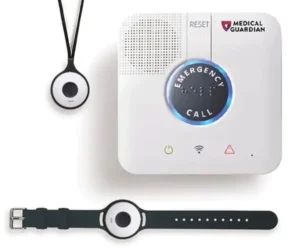 Medical alert systems play a crucial role in ensuring the safety and well-being of seniors, particularly those living alone or with chronic health conditions. These systems provide a direct line to assistance at the press of a button, allowing for immediate response in emergencies. Below are some notable medical alert systems available for monitoring seniors, each offering unique features to cater to various needs and preferences.
Medical alert systems play a crucial role in ensuring the safety and well-being of seniors, particularly those living alone or with chronic health conditions. These systems provide a direct line to assistance at the press of a button, allowing for immediate response in emergencies. Below are some notable medical alert systems available for monitoring seniors, each offering unique features to cater to various needs and preferences.
In-Home Medical Alert Systems
Life Alert: One of the most recognized names in the industry, Life Alert offers a range of emergency response services, including their classic pendant or wristband with a button to press for help. Their system also includes fire, CO, and smoke monitoring options.
Medical Guardian: Offering both in-home and on-the-go systems, Medical Guardian provides a comprehensive range of options. Their in-home system uses a landline or cellular connection, and they offer a wearable pendant or wristband with fall detection as an add-on feature.
Bay Alarm Medical: This company provides in-home medical alert systems that can use either a landline or cellular connection. They also offer additional protection through wall buttons and a lockbox option for secure access to the house by emergency responders.
Mobile Medical Alert Systems
MobileHelp: Known for their cellular-based medical alert systems, MobileHelp offers devices that work both inside the home and out. Their systems come with GPS technology, allowing for precise location tracking during emergencies.
Lively Mobile Plus: a device that is a small, portable medical alert system with fall detection, GPS technology, and waterproof design. It’s designed for active seniors who are often out and about, providing peace of mind everywhere they go.
Philips GoSafe: Philips Lifeline’s GoSafe system offers a mobile pendant with built-in fall detection, two-way voice communication, and GPS tracking. It’s designed for seniors who want protection both at home and outside.
Advanced Medical Alert Systems with Health Monitoring
QMedic: Designed to be smart and proactive, QMedic’s medical alert system offers wearable wristbands and pendants that track activity and sleep patterns, sending alerts to caregivers if unusual patterns are detected.
WellBe: This system combines a medical alert device with a virtual health assistant. WellBe’s smart speaker offers medication reminders, appointment alerts, and 24/7 emergency assistance, along with answering health-related questions.
Features to Consider
When choosing a medical alert system, consider the following features based on the senior’s lifestyle and needs:
- Mobility: Decide between an in-home system for less active seniors or a mobile system for those who frequently go out.
- GPS Tracking: Essential for mobile systems, allowing caregivers and emergency responders to locate the senior quickly.
- Fall Detection: Automatically detects falls and sends an alert, offering added protection for seniors prone to falls.
- Water Resistance: Important for devices meant to be worn at all times, including in the shower.
- Range: For in-home systems, ensure the device works throughout the home and even in the yard.
- Battery Life: Especially critical for mobile devices, to ensure they’re always ready in an emergency.
Each system has its strengths, and the best choice depends on individual needs, preferences, and the environments in which the senior spends their time. It’s also important to consider the service’s cost, including any monthly fees and device costs, to find an option that provides both safety and value.
This is far from an exhaustive list of options, but a range of solutions so you can begin researching what would be best for you and your senior loved one.
📸 by Andrea Piacquadio

From a young age, Stacey’s link to the senior care industry grew alongside her mother’s work at a nursing home, where she often accompanied her. By her early teens, she secured her first official job at a nursing home, laying the foundation for a profound journey in senior care spanning over four decades. Her roles varied from opening assisted living and memory care residences to working in nursing homes and independent senior living communities. As the former Director of Fun for 300 independent seniors, she expertly organized daily events and trips. Stacey’s unwavering passion, nurtured by her family, and professional dedication as a recreation therapist, reflect her deep commitment to preserving the dignity and well-being of seniors.
Stacey’s senior care expertise has been recognized by the media including U.S. News and World Report and Care.com.
Stacey and her husband Bryan are the owners of the senior in-home care agency A Place At Home – North Austin.


